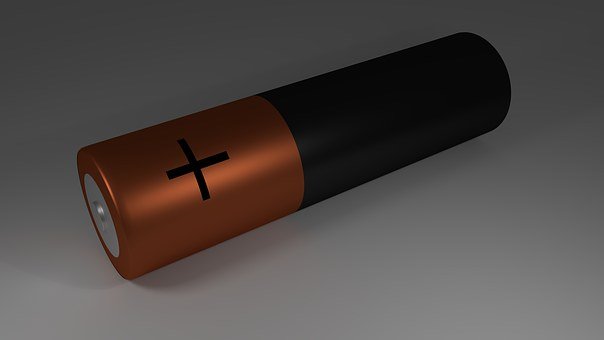There is a weight limit on every boat, and it’s no secret that minimizing the amount of weight you carry on your boat is crucial. The weight of your boat is an extremely essential consideration.
The combined weight of your belongings and passengers might have a significant impact on the performance of your boat. So how much does a marine battery weigh? What are the types of batteries and how does the weight vary?
It is difficult to answer this directly as there are many types of marine batteries with varying weights. In this article, you will get a detail about the weight of these marine batteries. Stay tuned to learn it entirely.
What Are the Types Of Marine Batteries?
There are three basic types of marine batteries:
Marine Starting Batteries:
These are designed to give brief bursts of energy that are both swift and powerful.
It is also quickly recharged by the engine alternator. These are not suitable for trolling motors or other small appliances.
Deep Cycle Batteries:
These are designed to discharge slowly over an extended period. They also withstand several hundred charging and discharging cycles before needing to be replaced.
These are suitable for powering an electric trolling motor and other battery-powered accessories. Such as audio systems, windlass, depth finders, fish locators, and other electronic devices. They shouldn’t be used as starting batteries.
Sealed Marine Dual-Purpose Batteries:
They provide the benefits of both starting batteries and deep cycle batteries in one package. They are an excellent alternative for smaller boats where there isn’t enough space for two batteries to be installed separately.
While they are capable of performing the functions of both a starting battery and a deep cycle battery, they are not as efficient as individual batteries in their respective capacities.
Depending on the chemical composition, marine batteries can be distinguished as follows:
Wet Cell (Flooded):
The most frequent and least expensive type of battery found on boats. Their method of connecting lead plates is to use a reservoir of liquid sulfuric acid as a conduit.
They should be periodically inspected and topping-off with distilled water due to the heat and outgassing produced while charging.
Gel Batteries:
Gel Batteries contain a mixture of sulfuric acid, fumed silica, clean water, and phosphoric acid, which is known as the “gel.”
Because the gel is fairly viscous, it prevents leaks from occurring if the battery is inverted or the casing is broken.
Gel batteries charge at a lower voltage than flooded or glass-mat batteries.
AGM Batteries:
AGM batteries provide superior shock and vibration protection compared to wet or gel batteries, and they require little to no maintenance.
Despite their high cost, AGM batteries are preferable for their safety and quality. Installing these require a smart charger to complement them.
The batteries used are usually 12V. Moreover, they can be categorized according to dimension into groups (e.g groups 24, 27 and 32).
How Heavy Are Lithium Ion Deep Cycle Marine Batteries?
It has been reported that lithium-ion batteries are up to 75% lighter than identical lead-acid batteries. Because of the significant weight savings, your boat will be lighter and more efficient.
Antigravity Deep Cycle Batteries are just 26 lbs in weight. But they provide 30 to 40% more usable energy than lead/acid batteries of the same Amp Hour capacity.
How Much Does An AGM Battery Weigh?
It weighs 65.87lbs (29.88kg) on average to power a 100Ah deep-cycle AGM battery. The greater the amp-hour capacity of the battery, the heavier the battery becomes.
The size of deep cycle batteries increases in tandem with the growth in amp-hours. Aside from the difference between a 30Ah and a 250Ah battery, the battery does not appear to have grown significantly in height.
This results in the batteries becoming longer, which is beneficial when it comes to fitting them into the available space.
How Much Do Group 24, 27, and 31 Batteries Weigh?
These batteries can be normal AGM, LiPo batteries, flooded lead-acid batteries. They can be Deep cycle or any other type. The grouping is done based on their dimensions.
Group 24
These groups of batteries are suitable for powering small to medium-sized trolling motors.
The majority of group 24 marine batteries weigh between 40 and 50 pounds on average. In general, their normal dimensions are 10 to 12 inches in length, 6 to 7 inches in width, and 8 to 10 inches in height.
It is common for Group 24 batteries to have an amp-hour rating of between 70 and 85, while some can have ratings as high as 100 ampere-hours.
For the most part, group 24 batteries are 12V rechargeable batteries, and most of them may be connected in series to double or triple the voltage.
Group 27
These are suitable for high-power trolling motors. The weight of these batteries is normally between 60 and 75 pounds on average.
Lithium-ion batteries in the Group 27 category weigh substantially less. Their measurements range from 12 to 13 inches in length, 6 to 7 inches in width, and 8 to 9 inches in height.
These batteries have an amp-hour rating ranging from 65 to 110 amp-hours. Some of them are 12V batteries, but others are 24V batteries, and so on.
In any case, they can be connected in series to increase the voltage by the same amount as the group 24 batteries mentioned above.
Group 31
These batteries power small to medium-sized trolling motors. For marine applications, Group 31 batteries are among the most popular and widely used batteries on the market.
The size of group 31 batteries is comparable to that of group 27 batteries. It is common for them to weigh 60 to 75 pounds, and their dimensions range between 12 and 13 inches in length, 6 to 7 inches in width, and 9 to 10 inches in height.
These batteries outperform both group 24 and group 27 batteries in terms of power by a large margin. They have an amp hour rating ranging from 95 to 125 in most cases.
Some are 12V batteries, while others are 24V batteries, and they may be put together in series, just like conventional batteries, if more power is required.
Final Words
Marine batteries are available in a variety of weights and sizes, regardless of their group size number. How much does a marine battery weigh and the quality of the materials used are the two most important elements in battery classification.
I hope that after reading this article, you will have a better grasp of battery group size numbers and the function they play in assisting you in determining the most appropriate battery for your unique marine applications.
Related Posts:


